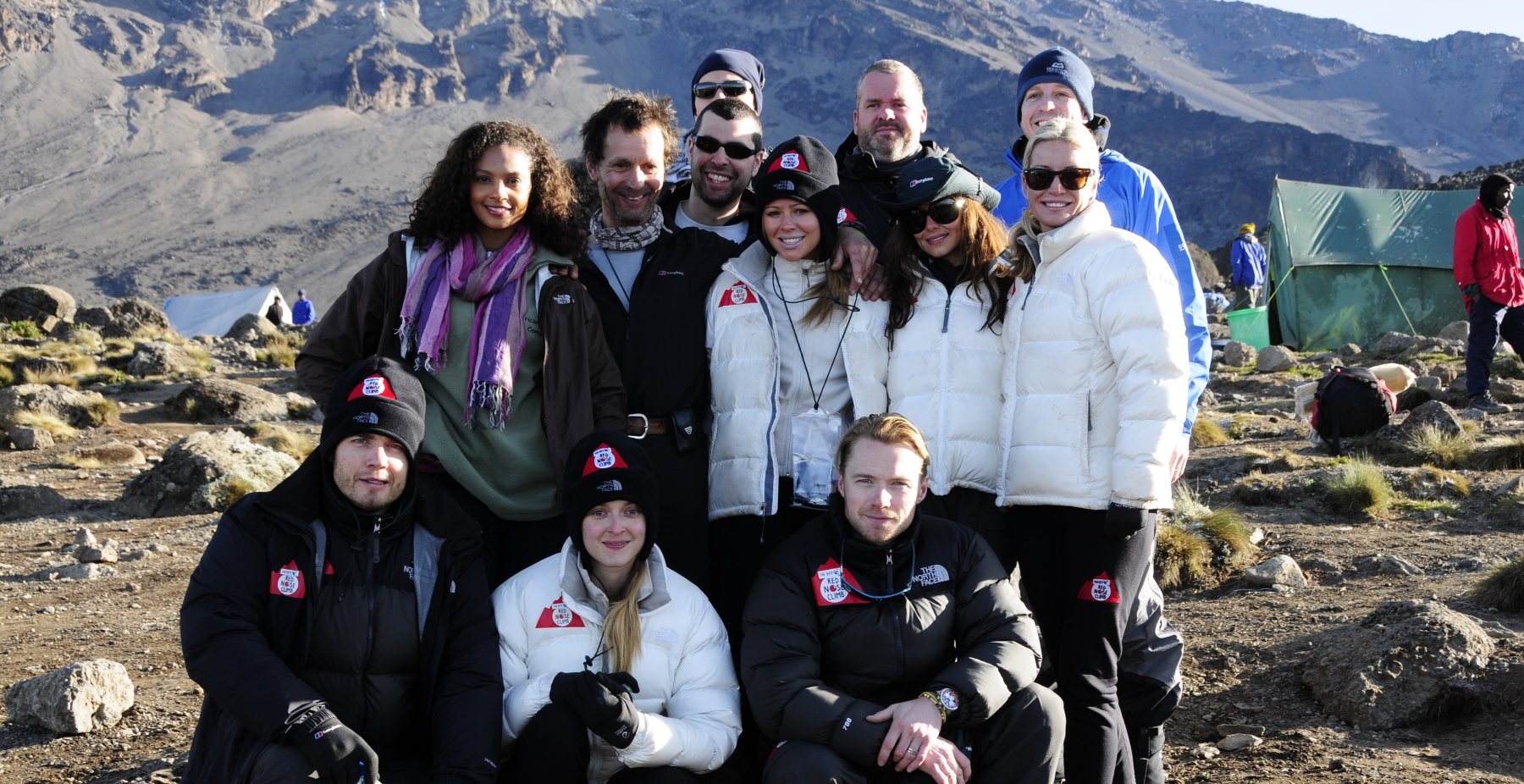With the right preparation and the right climb – you can summit Kilimanjaro and enjoy it!
To help you climb to the summit of Kilimanjaro, Jeremy Gane, Project Manager of the 100% successful Comic Relief Red Nose Day Climb of Kilimanjaro 2009, lists 5 Key Notes:
1) Get Physically Fit
You should aim for a good level of aerobic fitness, core fitness, and fitness for long walks. This can be achieved by a variety of exercise types: walking, jogging, biking, swimming, and if you like the gym make use of the step trainer and inclined jogging/walking plane. Stretches, sit-ups, squats and press-ups are all helpful in getting your core and aerobic fitness levels up. You can do those at home, or during your training walks – or in the office!
Your goal is to be comfortable out walking in the hills (undulating and not necessarily very steep) for approximately an eight-hour day. This day would include stops for snack break, picnic lunch etc. Carry a 30 to 40 litre day pack with at least two litres of water, waterproofs, picnic lunch etc. so that you replicate what you will be carrying on Kilimanjaro.
2) Mental Preparation
Work with your climb organiser to develop an understanding of what you are undertaking. At Gane and Marshall I meet as many of our clients as possible for a pre-climb briefing. If not possible, we schedule phone calls (conference or individual) so that we speak to each climber well before they set out for Kilimanjaro.
You will want to understand in advance the conditions you are likely to encounter, such as the weather patterns, the camping life, the daily treks, and the impact of altitude. And of course, think through carefully and try to visualise the big day when you will push to the summit. It is going to be tough; but it will also be one of the most adventurous, exciting and fulfilling things you will ever do!
3) Obtain kit and clothing
It is not the most expensive kit that is required, but rather a good layer system. Up to four layers for the upper body are required: thermal base layer or sweat-wicking T shirt for the warmer times, fleece, down jacket, and waterproof jacket, with the optional addition of a soft shell. For the lower body you will need up to three layers: thermal base layer, trekking trousers, waterproof trousers. Of course, we give separate attention to hands, head and feet.
At a typical climb briefing we present a day pack and main bag fully packed and ready for Kili. We go through the kit with you and explain how to manage each day in the event of changing weather and as the conditions get colder.
4) Climb Itinerary
The trekking programme must be adequately long (ideally 8 days / 7 nights on the mountain) to enable you to acclimatise to the altitude. The popular Lemosho Route Climb is highly recommended, and is the route we used during the 2009 Red Nose Day climb. Northern Circuit (9 days) is the route taken by the 2019 Red Nose Day climbers and offers a lengthier climb itinerary. Rongai 7 days is the minimum climb length we would recommend unless you add on a pre-Kili acclimatiser such as a Meru trek or our special Altitude Acclimatising Safari, in which case Rongai6 is viable. See all our Kilimanjaro Itineraries here.
5) On the climb
Pack light. Do not overload the day pack that you will carry each day. Essentials to pack are: 2 litres of water, fleece or ultralight down jacket, waterproof jacket and trousers, sun-protecting hat, personal medical kit with blister plasters, one or two snack bars, your high value items such as passport and credit card – sealed in a plastic w/p wallet
It is quite common for climbers to lose appetite and feel “under the weather” around Day 2 or 3 as your body adjusts to the new environment. Do not worry, but do ensure you hydrate and rest well. Should you continue to feel unwell and headaches persist and/or your breathing is laboured, then you must consult your guide.
Hydrate, hydrate, hydrate! You should aim to drink around 4 litres of water during the walking day. This is so important.
Climb slowly – never rush, and so give your body more time to acclimatise to the increasing altitude.
Operate a buddy system so that all group members check that they are drinking enough water and taking their anti-malarials. You should also keep an eye on your buddy for signs of AMS and if so talk to the chief guide.
Get to bed early to rest your body and relax. Expect to wake up several times in the night. Do not panic about not sleeping well. That is normal at altitude. Lying at rest in a warm sleeping bag will “re-charge your battery” well enough for you to manage and enjoy the next day of trekking.

